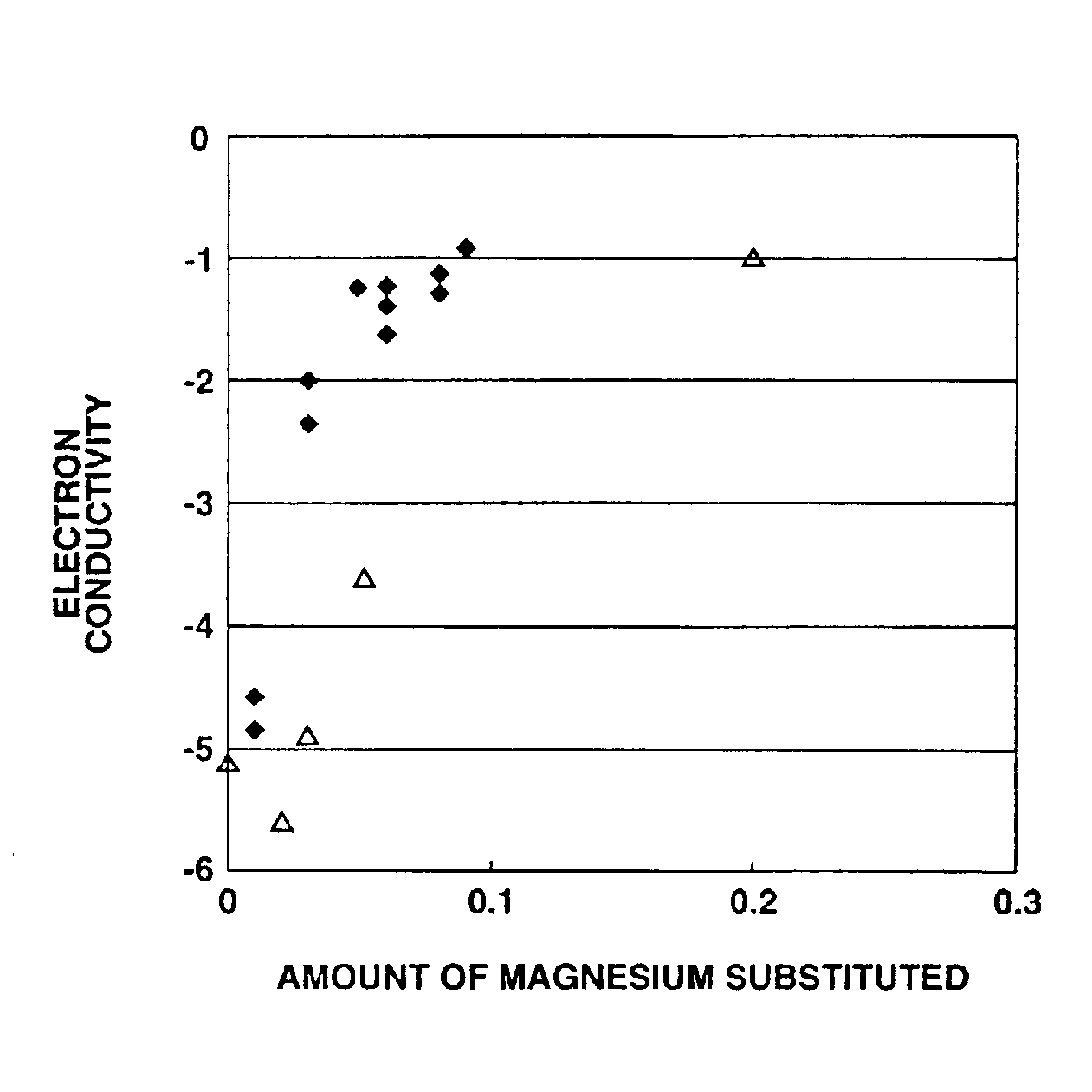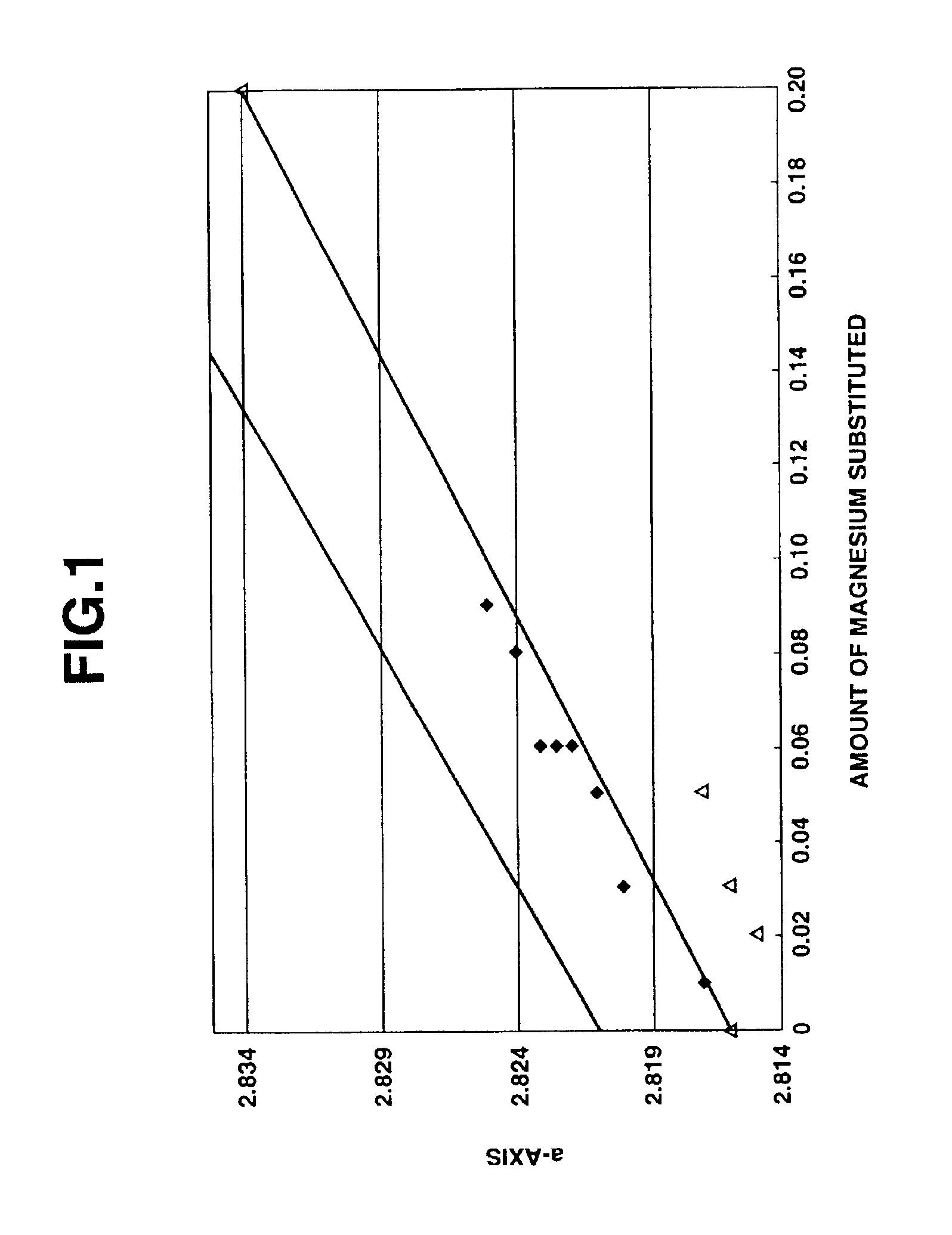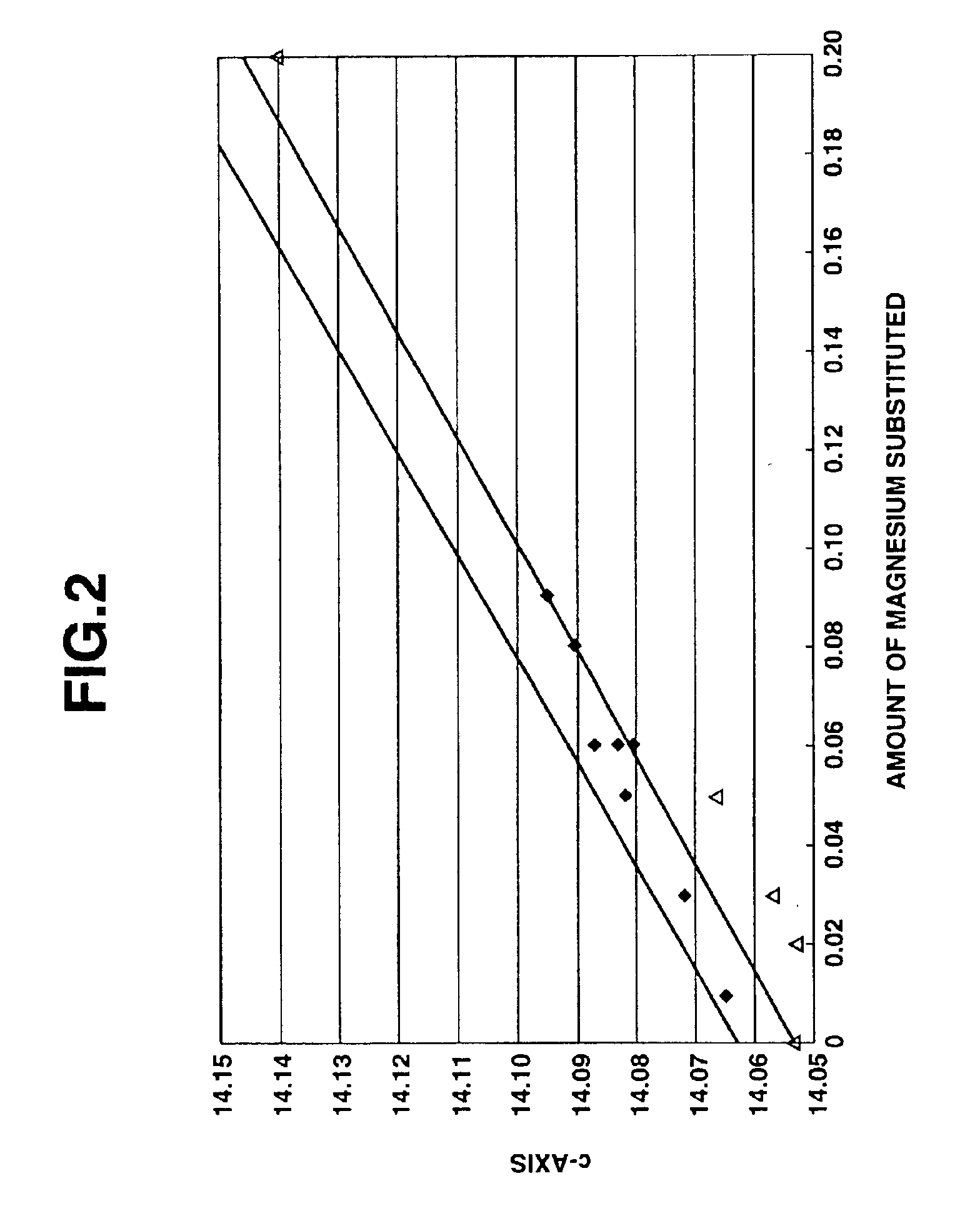Cobalt oxide particles and process for producing the same, cathode active material for non-aqueous electrolyte secondary cell and process for producing the same, and non-aqueous electrolyte secondary cell
a technology of cobalt oxide particles and cobalt oxide, which is applied in the direction of oxide conductors, non-metal conductors, cell components, etc., can solve the problems of release of oxygen, undesired reaction between, and the inability to obtain cathode active materials and cobalt oxide particles until now, and achieve excellent heat stability and stable crystal structure.
- Summary
- Abstract
- Description
- Claims
- Application Information
AI Technical Summary
Benefits of technology
Problems solved by technology
Method used
Image
Examples
example 1
[0135]Magnesium sulfate (5.3 mol % based on cobalt) was added to a solution containing cobalt in an amount of 0.5 mol / liter. In addition, an aqueous sodium hydroxide solution was added in an amount of 1.05 equivalents based on one equivalent of a neutralized part of a sum of cobalt and magnesium, to the resultant solution, thereby subjecting the solution to a neutralization reaction. Then, the obtained solution was subjected to oxidation reaction at 90° C. for 20 hours while passing air therethrough, thereby obtaining magnesium-containing cobalt oxide particles. It was conformed that the thus obtained magnesium-containing cobalt oxide particles were composed of a Co3O4 single phase, and had a Mg content of 5.0 mol % (x in (Co(1-x)Mgx)3O4 is 0.05), an average particle diameter of 0.1 μm and a BET specific surface area value of 13.2 m2 / g.
example 2
[0136]The magnesium-containing cobalt oxide particles obtained in Example 1 were intimately mixed with a lithium compound such that the molar ratio of Li to a sum of cobalt and magnesium was 1.03. The resultant mixed particles were calcined at 90° C. for 10 hours under an oxidative atmosphere, thereby obtaining magnesium-containing lithium cobaltate particles.
[0137]As a result of the X-ray diffraction analysis of the thus obtained magnesium-containing lithium cobaltate particles, it was confirmed that the magnesium-containing lithium cobaltate particles were composed of a lithium cobaltate single phase without impurity phase, and had an average particle size of 5.0 μm, a BET specific surface area value of 0.5 m2 / g, an a-axis length of lattice constant of 2.821 Å, a c-axis length of lattice constant of 14.082 Å, a crystallite size of 642 Å, a volume resistivity value of −2.1×10 Ωcm and an electron conductivity log (1 / Ωcm) of −1.2. In addition, when the composition of the magnesium-co...
examples 3 to 9
[0139]The same procedure as defined in Example 1 was conducted except that the magnesium content was changed variously, thereby obtaining cobalt oxide particles.
[0140]Essential production conditions and various properties of the obtained cobalt oxide particles are shown in Table 1.
PUM
| Property | Measurement | Unit |
|---|---|---|
| particle diameter | aaaaa | aaaaa |
| particle diameter | aaaaa | aaaaa |
| BET specific surface area | aaaaa | aaaaa |
Abstract
Description
Claims
Application Information
 Login to View More
Login to View More - R&D
- Intellectual Property
- Life Sciences
- Materials
- Tech Scout
- Unparalleled Data Quality
- Higher Quality Content
- 60% Fewer Hallucinations
Browse by: Latest US Patents, China's latest patents, Technical Efficacy Thesaurus, Application Domain, Technology Topic, Popular Technical Reports.
© 2025 PatSnap. All rights reserved.Legal|Privacy policy|Modern Slavery Act Transparency Statement|Sitemap|About US| Contact US: help@patsnap.com



